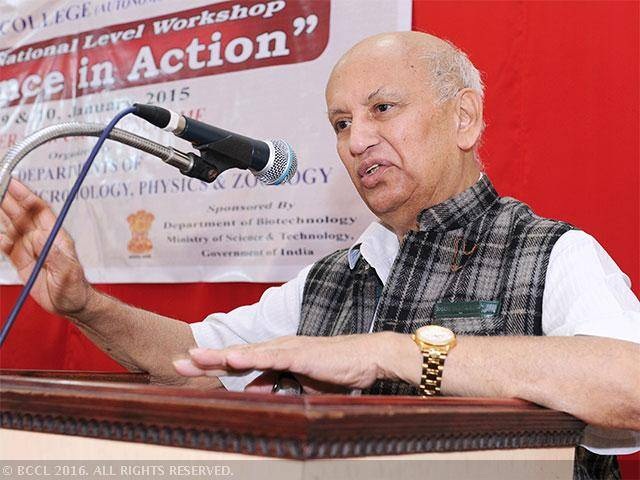The International Astronautical Federation (IAF) inducted renowned space scientist U.R. Rao into its Hall of Fame for his contribution to development of India’s space technology.
About IAF :
The International Astronautical Federation (IAF) is an international space advocacy organisation based in Paris, and founded in 1951 as a non-governmental organization to establish a dialogue between scientists around the world and to lay the information for international space cooperation.
- It has over 300 members from 66 countries across the world. They are drawn from space agencies, companies, universities, professional associations, government organizations and learned societies.
- It is linked with the International Academy of Astronautics (IAA) and the International Institute of Space Law (IISL) with whom the IAF organises the annual International Astronautical Congress (IAC).
- The largest and most well-known IAF event is the annual International Astronautical Congress (IAC), which takes place annually in September or October. The IAC features high-level plenaries and highlight lectures, specialised young professionals’ students events, Global Networking Forum, and a technical programme presenting latest advances in science and exploration, applications and operations, technology, infrastructure, and space and society.
About U. R. Rao :
Udupi Ramachandra Rao, popularly known as U. R. Rao is a space scientist and former chairman of the Indian Space Research Organisation. Presently he is the Chairman of the Governing Council of the Physical Research Laboratory at Ahmedabad and chancellor of Indian Institute for Space Science and Technology (IIST) at Thiruvananthapuram.
- Rao was awarded the Padma Bhushan by the Government of India in 1976. He was inducted into the Satellite Hall of Fame, Washington on March 19, 2013 at a ceremony organised by the Society of Satellite Professionals International.

- With this he became the first Indian to be inducted. He is also to be inducted in International Astronautics Federation (IAF) as on 15th May 2016. He is also the first Indian again to achieve such a feat.
- Rao started his career as a cosmic ray scientist, under Dr.Vikram Sarabhai, which work he continued at MIT. In association with the JPL Group, he was the first to establish the continuous nature of the solar wind and its effect on geomagnetism using Mariner 2 observations.
- Rao’s experiments on a number of Pioneer and Explorer spacecraft led to a complete understanding of the solar cosmic ray phenomena and the electromagnetic state of the interplanetary space. Convinced of the imperative need to use space technology for rapid development, Rao undertook the responsibility for the establishment of satellite technology in India in 1972.
Under his guidance, beginning with the first Indian satellite “Aryabhata” in 1975, over 18 satellites including Bhaskara, APPLE, Rohini, INSAT-1 and INSAT-2 series of multipurpose satellites and theIRS-1A and IRS-1B remote sensing satellites were designed, fabricated and launched for providing communication, remote sensing and meteorological services. HE played several roles including,
- 1986-1992 Vice President, International Astronautical Federation
- 1988 to date President, Committee for Liaison with Developing Nations (CLODIN) of IAF
- 1997-2000 Chairman, UN-COPUOS (United Nations – Committee on Peaceful Uses of Outer Space)
- 1999 President, UNISPACE-III Conference
- 2007 Chairman, 30th International Antarctic Treaty Consultative Committee Meeting
Rao has been inducted into the 2016 IAF Hall of Fame for his outstanding contributions to the development of space technology in India and for his efforts towards sharing the greater benefits of space technology with developing countries and the world at large.
- The global recognition for the Padma Bhushan awardee, a former chairman of the state-run Indian Space Research Organisation (ISRO), came at the International Astronautical Congress of the federation held at Guadlajara in Mexico.
- Rao also accelerated rocket technology development, which resulted in the launch of the Augmented Satellite Launch Vehicle rocket in 1992 and the operational launch of the Polar Satellite Launch Vehicle subsequently.
- Rao has published 360 scientific and technical papers in various journals and received many honours and awards during his career.






